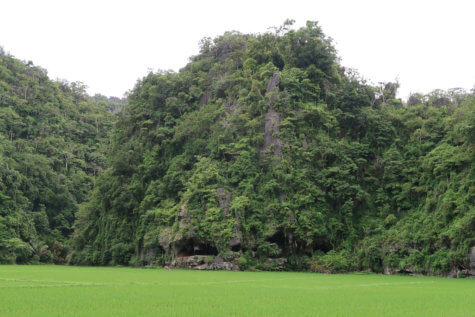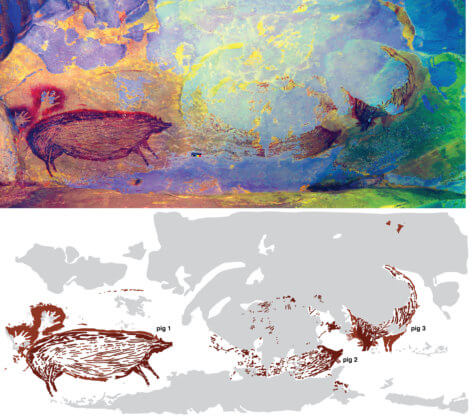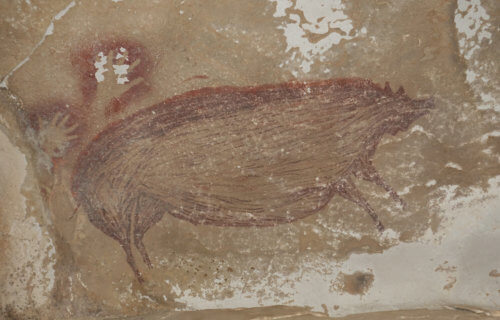INDONESIA — A cave painting of a pig discovered in Indonesia which is at least 45,500 years old is the oldest depiction of an animal ever discovered. It rivals the earliest known cave art in France and Spain, long considered to be some of the oldest figurative artwork on Earth.
The newly found painting is around 10,000 years older than the famous prehistoric rock art of the Chauvet Cave in southeastern France, which depicts animals including mammoths, lions and rhinos. Scientists say it may also provide the earliest evidence for anatomically modern humans in Sulawesi, the largest island in Indonesia.

This supports the theory that the first populations to settle the area, known as Wallacea, created artistic drawings of animals and narrative scenes as part of their culture. Indonesia has been known to harbor some of the world’s oldest surviving cave art, including previously discovered paintings in Sulawesi.
The previously oldest-known cave painting in the region was found in Maros-Pangkep, South Sulawesi, and was dated to about 43,900 years ago. However, Uranium-series dating has found the Leang Tedongnge cave painting is at least 1,600 years older if not more.
The most recently discovered paintings of the three pigs, alongside several hand stencils, were discovered in the limestone cave of Leang Tedongnge.
Locals say that no Westerners had been to the caves until study co-author Adam Brumm, a professor at Griffith University in Australia, and colleagues in 2017.
“The Sulawesi warty pig painting we found in the limestone cave of Leang Tedongnge is now the earliest known representational work of art in the world, as far as we are aware,” Brumm says in a statement. “However, this seems to be the most likely explanation given the sophistication of this early representational artwork and the fact that figurative depiction has so far only been attributed to modern man everywhere else in the world. If so, the dated pig image from Leang Tedongnge would appear to provide some of the earliest evidence, if not the earliest, for the presence of our species in Wallacea.”

In 2017 and 2018, Brumm and his team found the two previously unknown depictions of the Sulawesi warty pig, characterized by its facial warts. The beast was painted in red or dark purplish mineral pigments in the two Sulawesi limestone caves. The first pig, measuring 136 centimeters by 54 centimeters, appeared to be part of a narrative scene in the Leang Tedongnge cave with two less complete pigs that appeared to be confronting each other.
The dating method came from calcite that had formed over a small part of the painting. This gave an age of at least 45,500 years, but scientists say it could be even older.
In a cave nearby known as the Leang Balangajia 1 cave, they found four hand stencils superimposed on a pig. This was accompanied by several other poorly preserved animal paintings. All were dated to be about 32,000 years old.
The research is published in the journal Science Advances.
SWNS writer Laura Sharman contributed to this report.
